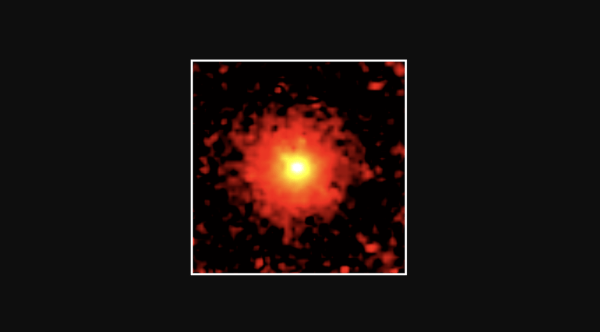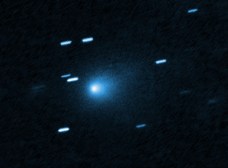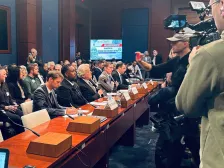‘The truly anomalous’: New AARO chief unveils Pentagon’s annual UAP caseload analysis, new efforts

As they continue to investigate and resolve a growing caseload of hundreds of reports from current and former government officials about encounters with unidentified anomalous phenomena (UAP), personnel in the Pentagon’s All-Domain Anomaly Resolution Office (AARO) are also launching new projects and resources to declassify materials, promote transparency and enhance collection capabilities.
The office’s new director Jon Kosloski detailed those and other updates during an off-camera press briefing at the Pentagon on Thursday, marking his first open engagement with reporters in this capacity since he assumed the role in August.
“AARO has taken meaningful steps to improve data collection and retention, bolster sensor development, effectively triage UAP reports and reduce the stigma of reporting a UAP event. In the coming year, AARO will prioritize building partnerships, promoting increased transparency and scaling up the work of the office,” Kosloski said.
‘Interesting sightings’
In his opening statement before taking reporters’ questions, Kosloski confirmed that his team briefed congressional staff this week and delivered the previously mandated fiscal 2024 Consolidated Annual Report on UAP.
The newly released, almost 20-page document includes explanations and multiple graphics to display officials’ data-based findings and notable trends about these potential anomalies that could threaten U.S. national security.
Kosloski said AARO has received over 1,600 UAP reports to date. Included in those are the 757 new reports that were submitted between May 1, 2023 and June 1, 2024 — the time period that this analysis covers.
“AARO has successfully resolved hundreds of cases in its holdings to commonplace objects such as balloons, birds, drones, satellites and aircraft. Meanwhile, over 900 reports lack sufficient scientific data for analysis and are retained in our active archive. These cases may be reopened and resolved should additional information emerge to support analysis,” he told reporters.
In response to follow-up questions, he noted that his team has been able to pull certain cases out of that archive based on new information they gained through their outreach and efforts. Some instances turned out to be ultimately not UAP, but happenings associated with SpaceX’s Starlink internet-enabling satellite constellation.
“We had several folks over the period, I think it was multiple months, [who] were seeing interesting activity in the sky. And we found that — because we’re continuously looking back at that active archive and looking for correlations across those incidents, but also new incidents coming in — we found some of those correlations in time, the direction that they were looking and the location, and we’re able to assess that they were, all in those cases, looking at Starlink flares,” Kosloski explained.
Offering a quick look into processes behind the scenes, he said once AARO insiders do resolve a UAP case as a drone or other human-made object, they pass it on for awareness and further studies at the military sites they appeared near, such as Langley Air Force Base, which he explicitly named.
“So those investigations are conducted by somebody else — and we’re focusing on the truly anomalous where we don’t understand the activity,” Kosloski said.
Several times during the briefing he underscored the inclusions within the report stating that at this point the office has “discovered no evidence of extraterrestrial beings, activity or technology” — or confirmations that any UAP activities are attributable to foreign adversaries.
Regarding DOD-specific incursions, AARO officials wrote in the report that “U.S. military aircrews provided two reports that identified flight safety concerns, and three reports described pilots being trailed or shadowed by UAP.”
Further, the report also suggests that, so far, the office has no verified indications that any potential adversarial foreign governments may have achieved a breakthrough capability.
“Lots of people, lots of organizations, have different definitions. The working definition that we’ve been using informally inside of our office — and we are working on more formal definitions for the different domains, for space, the air domain and the undersea domain — but the general definition is ‘beyond state-of-the-art today, and beyond where we think that we could get in the next couple years,’” Kosloski told DefenseScoop at the briefing.
The AARO chief noted that he’s drawn to tough scientific problems like his office’s mission, and he was therefore interested in joining as chief after more than two decades at the National Security Agency, where he conducted advanced research in the areas of optics, computing and crypto-mathematics.
“There are interesting cases that I — with my physics and engineering background and time in the [intelligence community] — I do not understand and I don’t know anybody else who understands,” Kosloski told reporters.
His team is now gathering information from eyewitnesses, video footage and other data sources to make sense of the incidents, which he suggested occurred pretty recently and repeatedly in the last year-and-a-half.
“Until we get the information approved for release, I’d rather not say where those sightings were, but [they’re] definitely interesting sightings,” Kosloski said.
AARO’s next moves
According to Kosloski, AARO currently employs about “several dozen folks,” but the “power of the office” also stems from its partnerships across the intelligence community, DOD and perhaps academia in the near future.
His remarks in the briefing and multiple sections of the new unclassified report spotlight various new pursuits and research coming to fruition under his leadership.
For instance, he confirmed AARO’s prototype sensor system for detecting, tracking and characterizing UAP — known as Gremlin — is conducting a 90-day pattern-of-life collection at a national security site.
“It’s currently deployed. We’d rather not say exactly where it is, because we want it to be an unbiased test, and don’t want to invite folks to come and do flyovers and test against the system. We chose that specific location because of the environment. We expect there to be a lot of variety in the types of things that we’re going to see. And there have been UAP reports in that general area,” Kosloski told DefenseScoop.
Right now, his team of experts recognize that they have “this geographic bias where we are getting reports near the national security sites, but we also have a bias from pilots and other security personnel” — so they need to build a baseline for reference.
“We want to have a better understanding of what ‘normal’ looks like near those national security sites. And then eventually we’ll be expanding our baseline investigations to other areas in the U.S. to look at what ‘normal’ looks like away from national security sites,” he said.
AARO officials also aim to expand the office’s international partnerships with some of America’s closest allies next year, to try to access more data and information to inform its investigations.
Among other efforts, they’re planning to host what Kosloski called a “declassification workshop” to ensure personnel feel equipped and primed for implementing best practices from across the DOD and IC.
Building momentum from ongoing engagement campaigns, officials want to follow up with education campaigns, as Kosloski put it, “so that as we’re increasing the number of accounts that come to us, we’re not just getting more of the noise, and trying to keep it focused on the interesting.”
He also confirmed AARO’s intent to release the second volume of its congressionally-directed historical record report in the next few months.
Notably, Thursday’s briefing was held one day after the latest hearing lawmakers hosted to spotlight contemporary needs for UAP oversight. Regarding concerns raised there around the Pentagon’s transparency about AARO’s unfolding reviews and largely secretive work, Kosloski said his team is open to engaging with “everybody.”
“We’ve been meeting with a variety of folks, from whistleblowers through staffers. And we encourage anybody with direct information to come to us, go to our secure reporting mechanism on the website — and when we get that, we’ll reach out to them and schedule a meeting in the [sensitive compartmented information facility or SCIF]. And Congress has enabled us to receive all sensitive information, regardless of classification or NDAs they may have signed. We receive that information, and we follow up on every tip that they provide us,” he told DefenseScoop.






